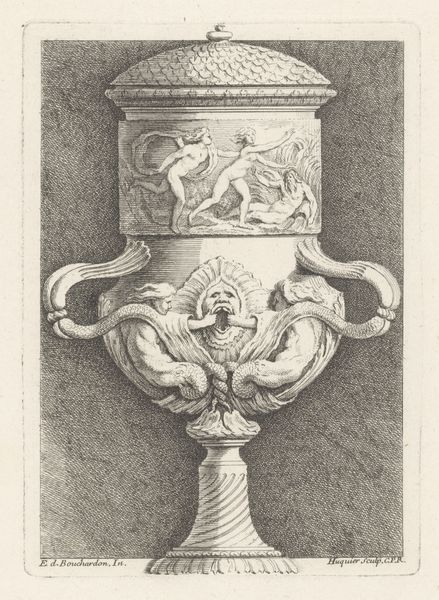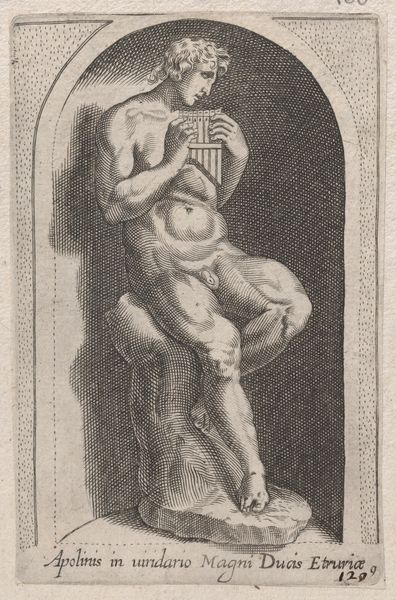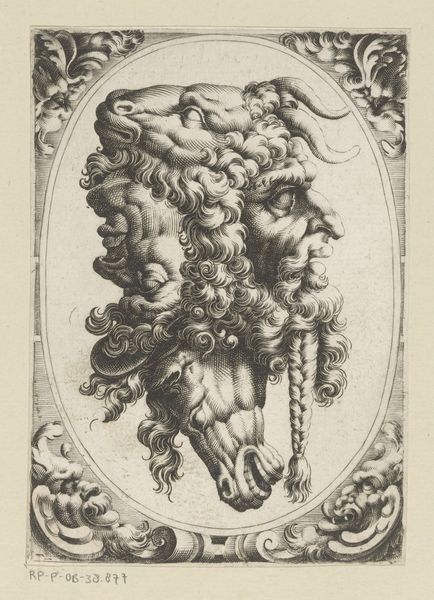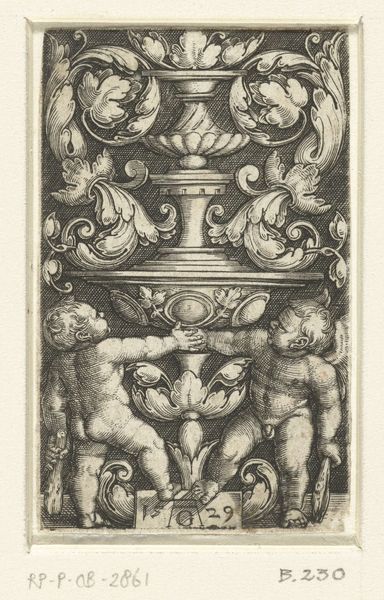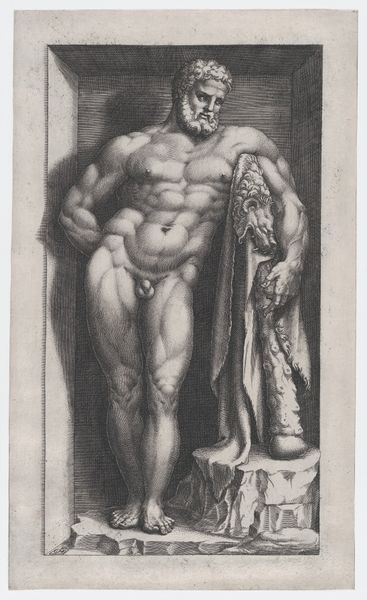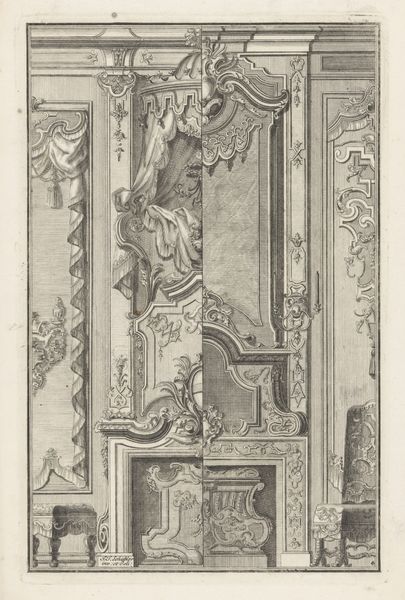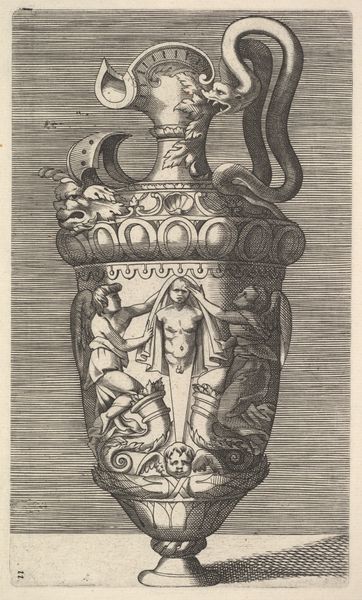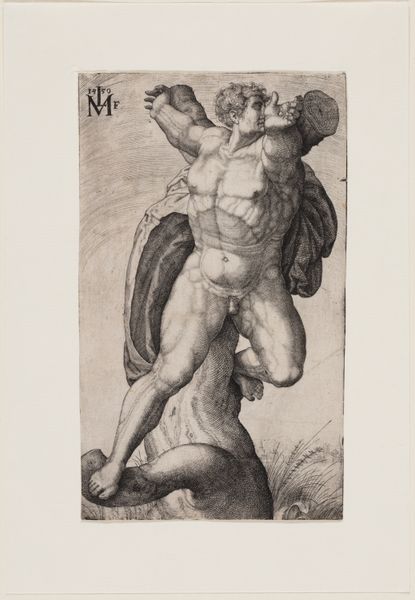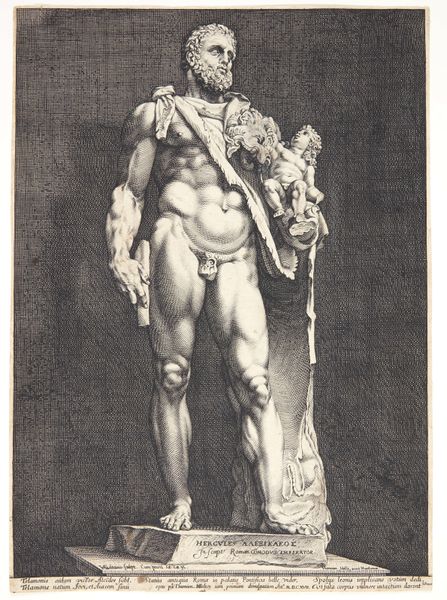
Design for a Term with Two Embracing Satyrs, from: Curieuses recherches de plusieurs beaus morceaus d'ornemens antiques et modernes (...) 17th century
0:00
0:00
drawing, print, engraving
#
drawing
#
baroque
#
pen drawing
# print
#
figuration
#
history-painting
#
engraving
Dimensions: sheet: 8 3/4 x 5 1/16 in. (22.3 x 12.9 cm)
Copyright: Public Domain
Jean Le Pautre designed this print of embracing satyrs sometime in the mid-17th century, using etching. This process involves coating a metal plate with wax, drawing a design with a sharp needle to expose the metal, and then bathing the plate in acid. The acid bites into the exposed lines, which are then inked and printed. Le Pautre’s expertise is evident in the precision of his lines, which create a range of tonal effects and textures. Notice how the cross-hatching gives form to the satyrs’ musculature and the intricate details of the floral garlands. Ornament prints like this were highly sought after during the period. They served as a vital link in the chain of production, connecting designers, artisans and patrons. These images were not just aesthetic exercises; they were part of a broader economic system, facilitating the dissemination of style and taste. Appreciating the labor and skill invested in designs like this helps us understand the complex interplay between art, craft, and commerce in the early modern era.
Comments
No comments
Be the first to comment and join the conversation on the ultimate creative platform.

